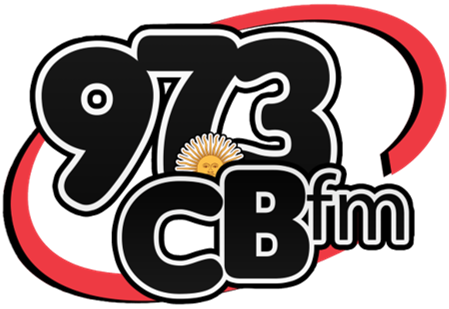
Even though, the pink collars jobs are said to be underpaid, they are at least secure. Thus, the machines deliberated by men, are now displacing them and forcing them into feminized pink-collar work. White Collar Workers are salaried professionals, typically referred to as office workers or management. The name originates from the color of the white formal dress shirts typically worn by professionals. The term “White Collar” came from office workers wearing white collared shirts without worrying about them getting spoiled from doing manual labor.

The term was used to distinguish female-orientated jobs from the blue-collar worker, a worker in manual labor, and the white-collar worker, a professional or educated worker in office positions. The term was mainly coined to describe jobs that were typically held by women but now the meaning has altered to take an account of all the service jobs. Pink Collar jobs, as the name implies, are jobs that cater towards women. Generally, Pink Collar labor is related to customer interaction, entertainment, sales, or other service-oriented types of work. Traditionally, these jobs are service oriented and do not always pay high salaries.
The Rise in Women Working in the Criminal Justice System
They need to introduce coaching and mentoring programs and break the ice between the employees irrespective of the gender. Further analysis finds the hardest hit to be those occupying pink collar jobs defined to mean someone working in the care-oriented career fields historically considered to be «women’s work.» Although both women and men are now free and encouraged to pursue occupations that align with their talents, skill sets, interests and passions, there remain some industries dominated by women primarily.
There are myriad reasons as to why many women are attracted to or currently working in pink collar jobs. Following World War II, teaching, nursing and secretarial work were some of the only occupations readily available for women. But as time progressed and more women joined the employment ranks, they were often raising families simultaneously and looked for roles that had predictable hours so they could combine work and childcare.

The act provided federal funds to establish health centers for prenatal and child care. Expectant mothers and children could receive health checkups and health advice. Some women were delighted to go back to being housewives or to their old jobs. Others had a taste of the satisfaction of working, doing a skilled trade, and earning a decent living, and they weren’t happy.
Can you solve 4 words at once?
In the corporate world where there is an emphasis on the designation and on the respect and power that is gained with it, usually the macro level of categorization is done using the buzz word ‘collars’. Normally, we are all used to differentiating people as white and blue collar workers and at times even mention the grey collar workers but fail to notice a major class of workers entitled as ‘the pink collar worker’ who is a member of the working class and performs in the service industry. They perform the roles such as librarians, waiters/waitresses, nutritionists, retail clerks, salespersons, nurses and many other roles concerning associations with people. Pink-collar worker is one who is employed in a job that is conventionally considered to be women’s work.
Pink ghetto was more commonly used in the early years, when women were finally able to work. Pink-collar work became the popular term once it was popularized by Louise Kapp Howe, a writer and social critic, in the 1970s. The term «white-collar worker» was coined in the 1930s by Upton Sinclair, an American writer who referenced the word in connection to clerical, administrative and managerial pink collar jobs meaning functions during the 1930s.[2] A white-collar worker is a salaried professional,[3] typically referring to general office workers and management. As mentioned above, many of these jobs are still held by women, and they can be lower-paying than other blue and white-collar jobs, but things are changing. The term pink-collar jobs began to describe jobs typically held by women.
In the sexist world of the (not-so-distant) past, those jobs were considered “women’s work” and were often paid less than “regular” jobs. The National Recovery Administration (NRA) was approved in May 1933. It raised wages, shortened workers’ hours, and increased employment for the first time maximizing hour and minimizing wage provisions benefiting female workers.
Recent Job Searches
In 1917, Louisa Lee Schuyler opened the Bellevue Hospital School of Nursing, which was the first to train women as professional nurses.[20] After completing training, female nurses worked in hospitals or more predominantly in field tents. The 1930s proved successful for women in the workplace thanks to federal relief programs and the growth of unions. For the first time women were not completely dependent on themselves, in 1933 the federal government expanded in its responsibility to female workers. In 1938 the Fair Labor Standards Act grew out of several successful strikes.
- Lesser development opportunities and insufficient mentoring further deteriorates women’s chances of career advancement.
- Normally, we are all used to differentiating people as white and blue collar workers and at times even mention the grey collar workers but fail to notice a major class of workers entitled as ‘the pink collar worker’ who is a member of the working class and performs in the service industry.
- Blue-collar workers are referred to as such because in the early 20th century, they usually wore sturdy, inexpensive clothing that did not show dirt easily, such as blue denim or cambric shirts.
Pink collar worker jobs are often found in industries that include nursing and health care, education, social work, childcare and administrative roles. The modern definition of pink-collar workers has changed from jobs women held to jobs in the service industry and ones where you primarily deal with people. Fortunately, significant advances have been made in the way society as a whole views occupations, skills, talents and gender roles. Both women and men now occupy roles as employees and managers in all ranks, including what have traditionally been categorized as white, blue and pink collar professions. As the workforce of the future continues to evolve, it is anticipated that there will be even greater gender diversity among «collar» job categories.
Blue Collar jobs involve a lot of physical and manual labor, some examples include; plumbers, mechanics, mechanics, electricians and the like. However, the large-scale shift toward services provision and away from goods production is leading to more millennial men getting the pink collar jobs. The question in front of them is more often than not about the job security.
Could your employees be losing interest in their jobs?
Women scientists found it hard to gain appointments at universities. In 1963 the Equal Pay Act was passed making it the first federal law against sex discrimination, equal pay for equal work (at least removed explicit base pay discrepancies based on sex), and had employers allow both men and women applicants to open positions if they qualified from the start. New women’s organizations sprouted up working to reform and protect women in the workplace. The largest and most prestigious of these organizations was the General Federation of Women’s Clubs (GFWC), whose members were conservative middle-class housewives. The International Ladies Garment Workers Union (ILGWU) was formed after women shirtwaist makers went on strike in New York City in 1909.
22 Funniest TV Characters of the ’90s – MovieWeb
22 Funniest TV Characters of the ’90s.
Posted: Tue, 08 Aug 2023 01:50:00 GMT [source]
Collar color is a set of terms denoting groups of working individuals based on the colors of their collars worn at work. These can commonly reflect one’s occupation within a broad class, or sometimes gender;[1] at least in the late 20th and 21st century, these are generally metaphorical and not a description of typical present apparel. For the two terms of longest use, white-collar workers are named for the white-collared shirts that were fashionable among office workers in the early and mid-20th century. Blue-collar workers are referred to as such because in the early 20th century, they usually wore sturdy, inexpensive clothing that did not show dirt easily, such as blue denim or cambric shirts.
Some examples of Grey collar workers include; IT professionals, health care professionals, child care professionals and skilled technicians. The term «pink-collar» was popularized in the late 1970s by writer and social critic Louise Kapp Howe to denote women working as nurses, secretaries, and elementary school teachers. Its origins, however, go back to the early 1970s, when the Equal Rights Amendment (ERA) was placed before the states for ratification. At that time, the term was used to denote secretarial staff as well as non-professional office staff, all of which were largely made up of women.
Whitecollar jobs usually pay very well and these positions very often require a degree in a specialized area as well as some work experience. Some examples of White Collar jobs include; corporate executives, advertising and public relation professionals, architects, stockbrokers, doctors, dentists and dietitians. Very often these positions can be highly stressful, demanding and require good time management skills.

The NRA had its flaws however, it only covered half of the women in the workforce particularly manufacturing and trade. The NRA regulated working conditions only for women with a job and did not offer any relief for the two million unemployed women who desperately needed it. A pink collar worker doesn’t call for as much specialised training as white-collar professions as a result they face a lot of challenges. The giant step backward in between the 1940s and the 1970s didn’t help. Luckily, today the term pink-collar worker is used to categorize both men and women who work in service-related occupations. In addition, Military nurses, an already «feminized» and accepted profession for women, expanded during wartime.
Examples of pink-collar
Typically, clerk positions were filled by young men who used the position as an apprenticeship and opportunity to learn basic office functions before moving on to management positions. In the 1860s and 1870s, widespread use of the typewriter made women appear better suited for clerk positions.[17] With their smaller fingers, women were perceived to be better able to operate the new machines. By 1885, new methods of note-taking and the expanding scope of businesses led office-clerk positions to be in high demand.[18] Having a secretary became a status symbol, and these new types of positions were relatively well paid.
Two million women joined the workforce during the Great Depression despite negative public opinion. Another organization that grew out of women in the workforce, was the Women’s Bureau of the Department of Labor. As female labor became a crucial part of the economy, efforts by the Women’s Bureau increased. The Bureau pushed for employers to take advantage of «women-power» and persuaded women to enter the employment market.



